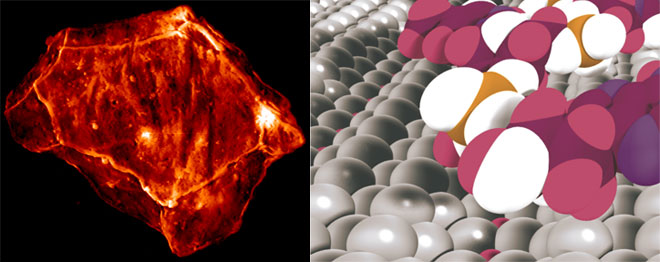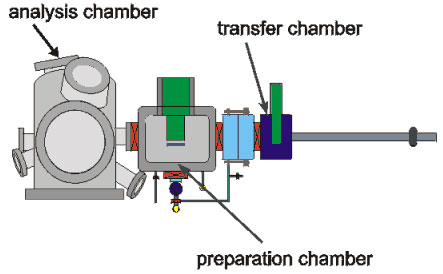AFM on Biological Systems
Nanotechnology meets Life Sciences
With the ongoing progress in scanning probe techniques, nanometer- and even atomic-scale imaging became possible on a variety of different samples. On biological systems, however, the resolution is often limited by the intrinsic softness of the investigated materials. This drawback can be overcome by profiling samples with non-contact scanning force microscopy which have been immobilized using cryo-techniques. For this purpose, we developed an instrument specially suited for the investigation of soft biological matter at low temperatures.

Methods and Instrumentation
The microscope is mounted on a commercially available vibration isolation system and is integrated into an ultrahigh vacuum chamber. The vacuum system consists of a transfer chamber, a preparation chamber including a stage for in-situ freeze drying, freeze etching, or freeze fracturing, and the analysis chamber with the microscope. The transfer chamber allows besides its use as simple air lock also an exchange of the cold sample with cryo-electron microscopes. A flow cryostat cools the sample to the temperature of liquid nitrogen, while the tip is scanned. First test measurements on samples such as T4-bacteriophages (virus) are currently in progress.

